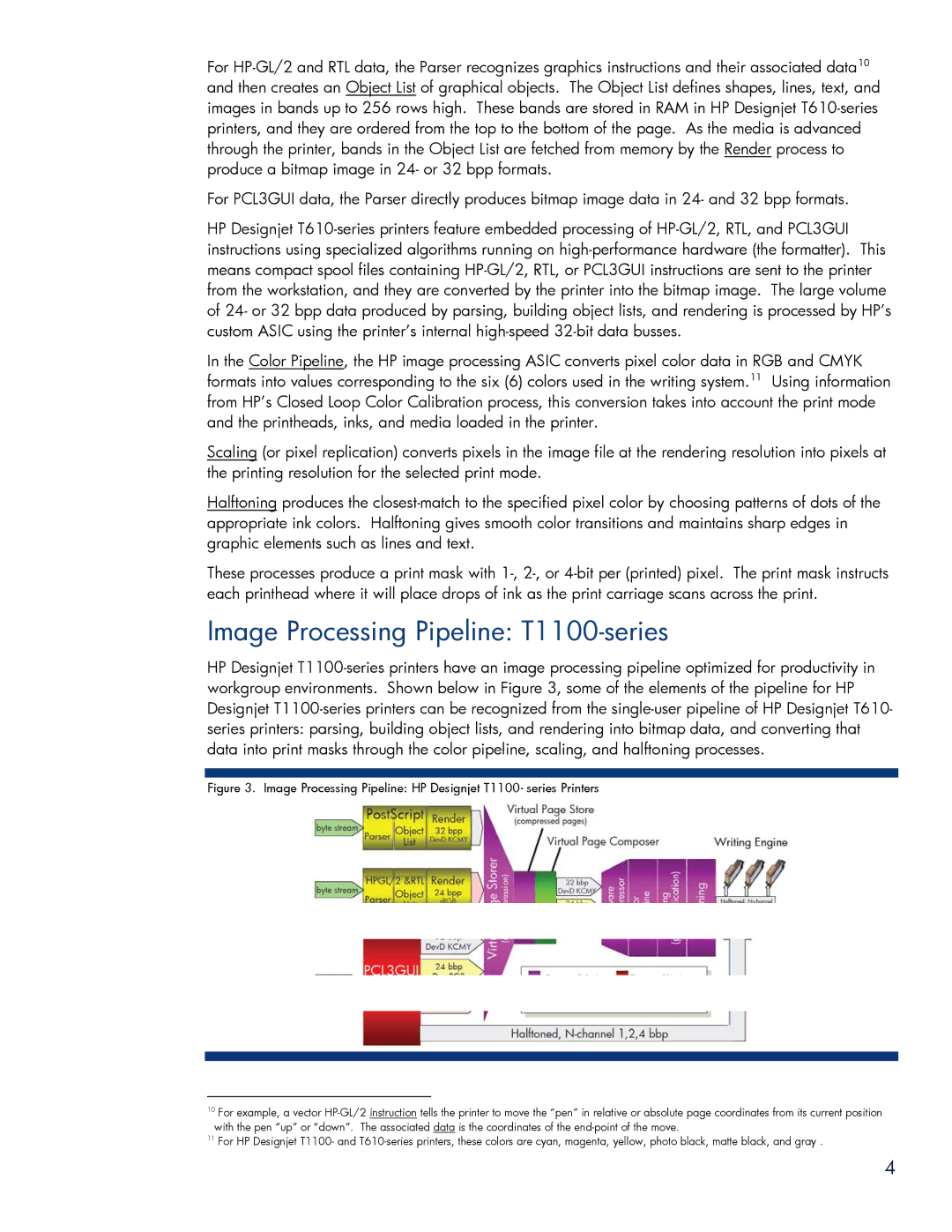For HP-GL/2 and RTL data, the Parser recognizes graphics instructions and their associated data10 and then creates an Object List of graphical objects. The Object List defines shapes, lines, text, and images in bands up to 256 rows high. These bands are stored in RAM in HP Designjet T610-series printers, and they are ordered from the top to the bottom of the page. As the media is advanced through the printer, bands in the Object List are fetched from memory by the Render process to produce a bitmap image in 24- or 32 bpp formats.
For PCL3GUI data, the Parser directly produces bitmap image data in 24- and 32 bpp formats.
HP Designjet T610-series printers feature embedded processing of HP-GL/2, RTL, and PCL3GUI instructions using specialized algorithms running on high-performance hardware (the formatter). This means compact spool files containing HP-GL/2, RTL, or PCL3GUI instructions are sent to the printer from the workstation, and they are converted by the printer into the bitmap image. The large volume of 24- or 32 bpp data produced by parsing, building object lists, and rendering is processed by HP’s custom ASIC using the printer’s internal high-speed 32-bit data busses.
In the Color Pipeline, the HP image processing ASIC converts pixel color data in RGB and CMYK formats into values corresponding to the six (6) colors used in the writing system.11 Using information from HP’s Closed Loop Color Calibration process, this conversion takes into account the print mode and the printheads, inks, and media loaded in the printer.
Scaling (or pixel replication) converts pixels in the image file at the rendering resolution into pixels at the printing resolution for the selected print mode.
Halftoning produces the closest-match to the specified pixel color by choosing patterns of dots of the appropriate ink colors. Halftoning gives smooth color transitions and maintains sharp edges in graphic elements such as lines and text.
These processes produce a print mask with 1-, 2-, or 4-bit per (printed) pixel. The print mask instructs each printhead where it will place drops of ink as the print carriage scans across the print.
Image Processing Pipeline: T1100-series
HP Designjet T1100-series printers have an image processing pipeline optimized for productivity in workgroup environments. Shown below in Figure 3, some of the elements of the pipeline for HP Designjet T1100-series printers can be recognized from the single-user pipeline of HP Designjet T610- series printers: parsing, building object lists, and rendering into bitmap data, and converting that data into print masks through the color pipeline, scaling, and halftoning processes.
Figure 3. Image Processing Pipeline: HP Designjet T1100- series Printers
10For example, a vector HP-GL/2 instruction tells the printer to move the “pen” in relative or absolute page coordinates from its current position with the pen “up” or “down”. The associated data is the coordinates of the end-point of the move.
11For HP Designjet T1100- and T610-series printers, these colors are cyan, magenta, yellow, photo black, matte black, and gray .

